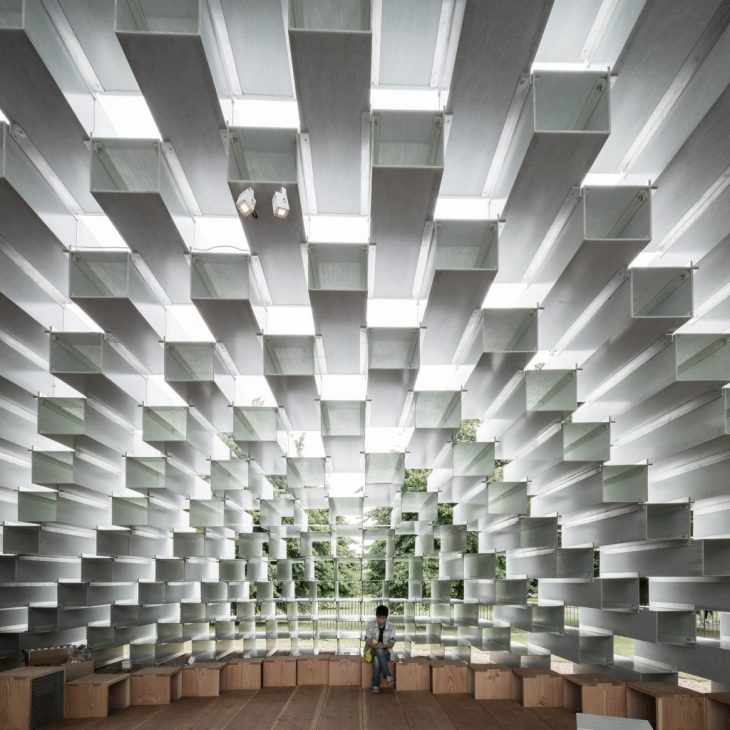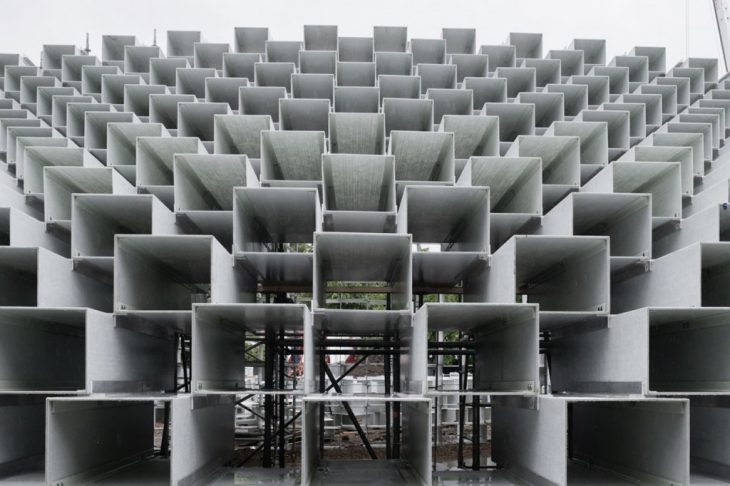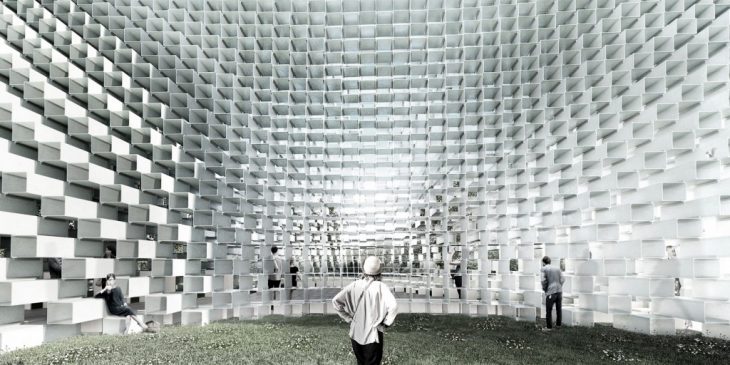
Viewed side-on, the pavilion is rectangular. But when seen from the front or at an angle, its curving silhouette is revealed. It also changes from opaque to see-through, depending on the viewing angle.
“We liked this idea that, quite often, interesting things happen when you change seemingly incompatible elements and you combine them into a new hybrid – we call it BIGamy!” said Ingels.

fig.1; Image showing the steps to draw the pavilion – Source; Author

fig.2; Details of the intersection of the boxes – Source: Archdaily

fig.3; Image showing 5 different iterations – Source: Author
The structure is located outside the Serpentine Gallery in London’s Kensington Gardens. It is made up of translucent fiberglass frames, stacked on top of each other in a typical brickwork pattern.
The hollow blocks are gradually shifted forwards and backward to create two layers of undulating surfaces, which divide to create curved entrances at both ends of the pavilion, as well as the cavernous center.

fig.5; 5 different views showing the different gradients of transparency – Source: Author

fig.6; Side view of the Pavillion – Source: Archdaily
</p>